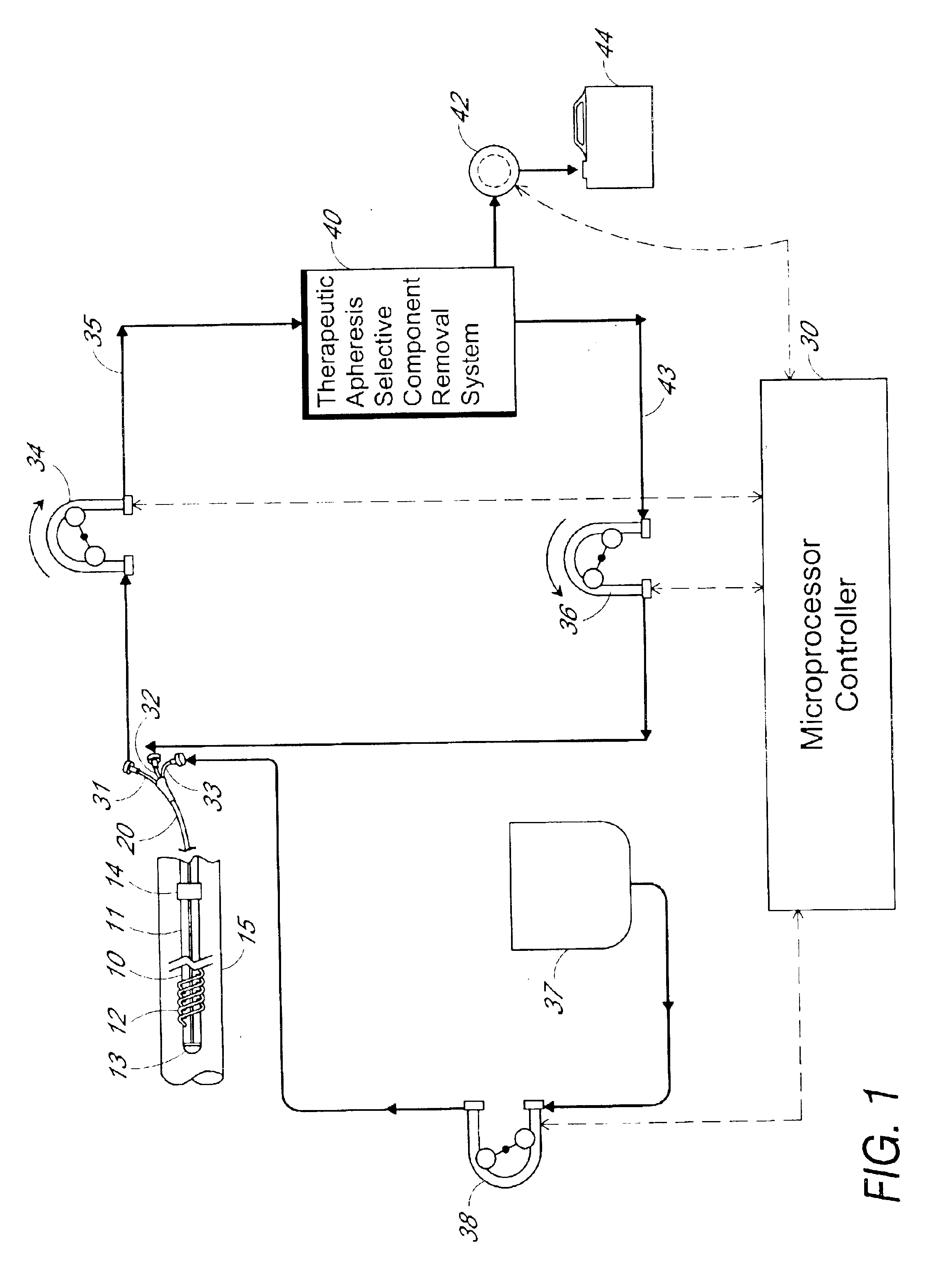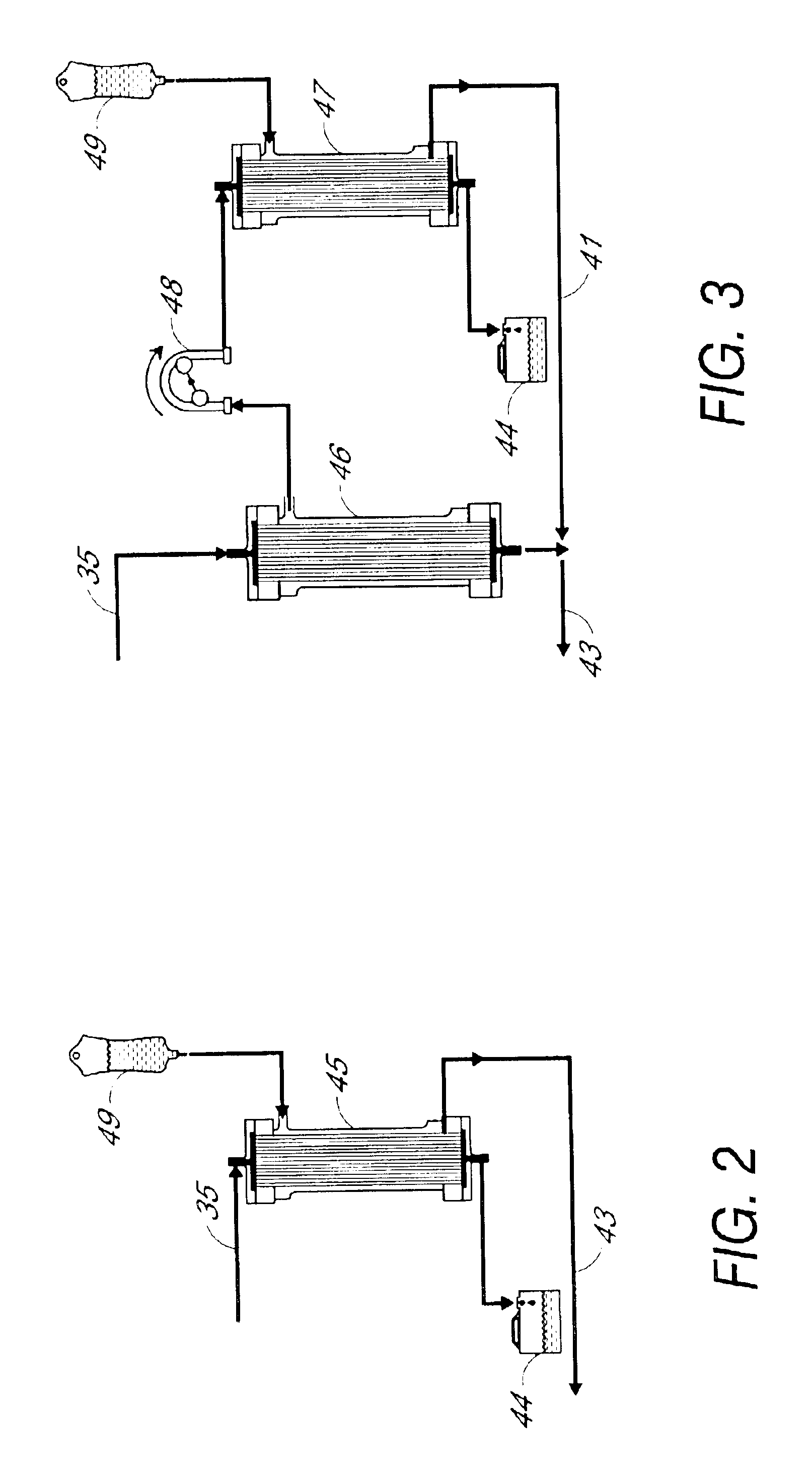Method and apparatus for therapeutic apheresis
a technology of apheresis and apheresis pore, applied in the field of medicine, can solve the problems of affecting the efficiency of the patient, and the treatment of the whole blood is major disadvantage, so as to achieve the effect of reducing the loss of efficiency and confinement of the patient, and reducing the loss of mass density
- Summary
- Abstract
- Description
- Claims
- Application Information
AI Technical Summary
Benefits of technology
Problems solved by technology
Method used
Image
Examples
Embodiment Construction
The preferred embodiment of an apparatus for carrying out therapeutic apheresis according to the invention schematically illustrated in FIG. 1 includes a filter device 10, a triple lumen catheter 20, a therapeutic apheresis selective component removal apparatus 40, a fluid control assembly including tubing and pumps, and a microprocessor / controller 30. The filter device 10, which will be described in more detail hereinafter, is implantable in the vasculature of a patient or animal in which in-vivo plasma separation is to be carried out. Veins suitable for implanting the filter include the superior or inferior vena cava or the subclavian vein. In the drawing, the filter device 10 is shown implanted in the inferior vena cava 15. A triple lumen catheter 20 is secured to the proximal end 11 of the filter with header 14. Triple lumen catheter 20 is in fluid communication with the interior of the filter device with the three catheter lumens connected to tubing for directing outgoing plasm...
PUM
| Property | Measurement | Unit |
|---|---|---|
| length | aaaaa | aaaaa |
| length | aaaaa | aaaaa |
| length | aaaaa | aaaaa |
Abstract
Description
Claims
Application Information
 Login to View More
Login to View More - R&D
- Intellectual Property
- Life Sciences
- Materials
- Tech Scout
- Unparalleled Data Quality
- Higher Quality Content
- 60% Fewer Hallucinations
Browse by: Latest US Patents, China's latest patents, Technical Efficacy Thesaurus, Application Domain, Technology Topic, Popular Technical Reports.
© 2025 PatSnap. All rights reserved.Legal|Privacy policy|Modern Slavery Act Transparency Statement|Sitemap|About US| Contact US: help@patsnap.com



